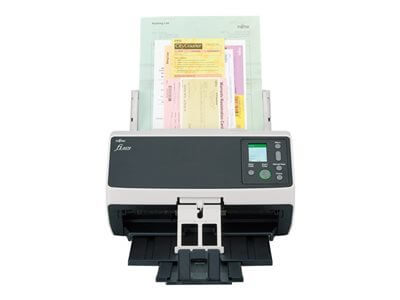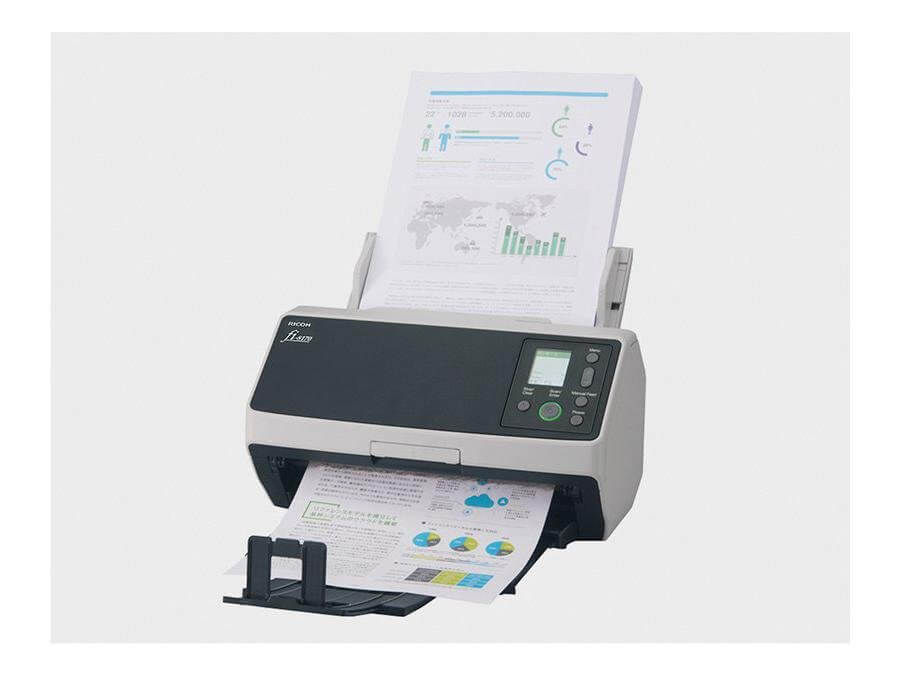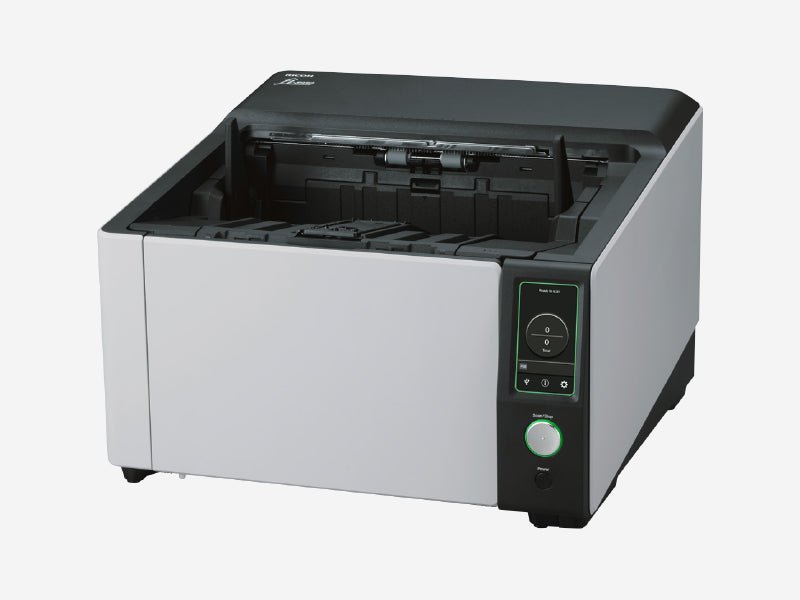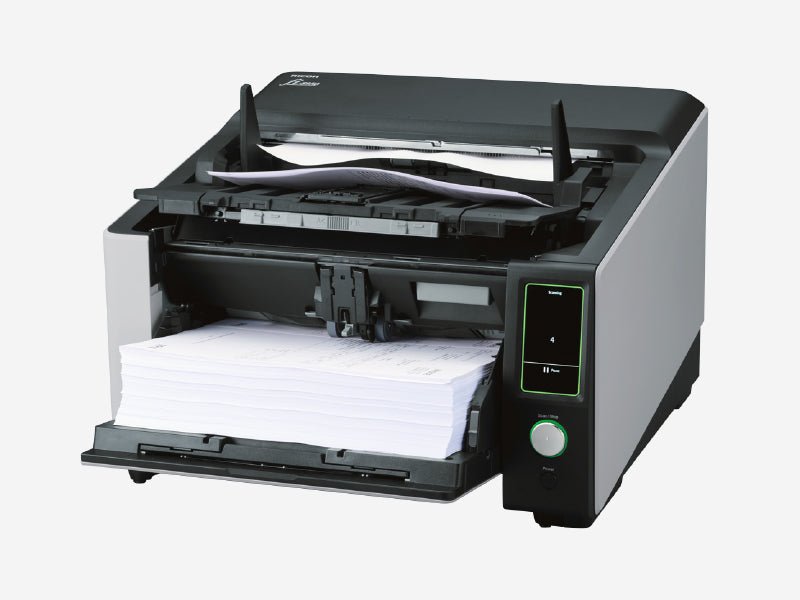Streamline your document workflow with professional desktop production scanners designed for high-volume scanning environments.
Whether you're digitizing invoices, contracts, or archival documents, our selection of production-grade scanners delivers exceptional speed, reliability, and image quality for offices, legal firms, medical practices, and document management centers across Texas.
Key advantages of desktop production scanners:
- High-speed scanning: Process 40-120 pages per minute to eliminate bottlenecks
- Superior image quality: Advanced sensors and processing for crisp, accurate scans
- Robust daily duty cycles: Handle 3,000-20,000+ pages daily with reliable performance
- Intelligent document handling: Auto size detection, multi-feed prevention, and mixed batch scanning
- Versatile connectivity: USB, network, and cloud-ready integration with document management systems
- Advanced software included: OCR, barcode recognition, and automated indexing capabilities
Desktop Production Scanner Comparison Guide
| Feature | Entry-Level Scanners | Mid-Range Production | High-Volume Production |
|---|---|---|---|
| Scan Speed (ppm) | 40-60 ppm | 70-90 ppm | 100-120+ ppm |
| Daily Duty Cycle | 3,000-5,000 pages | 7,000-12,000 pages | 15,000-20,000+ pages |
| ADF Capacity | 80-100 sheets | 100-200 sheets | 250-500 sheets |
| Optical Resolution | 300-600 dpi | 600 dpi | 600 dpi |
| Connectivity | USB 3.0 | USB 3.0, Network optional | USB 3.0, Gigabit Ethernet, WiFi |
| Advanced Features | Basic OCR, Auto crop | OCR, Barcode, Blank page removal | Advanced OCR, Barcode, Multi-feed detection, Patch code |
| Best For | Small offices, occasional batch scanning | Accounting firms, HR departments, medical offices | Service bureaus, mailrooms, large document centers |
| Typical Price Range | $800-$1,500 | $1,500-$3,500 | $3,500-$8,000+ |
Frequently Asked Questions About Desktop Production Scanners
What is the difference between a desktop scanner and a production scanner?
Desktop production scanners are specifically designed for high-volume scanning environments, offering superior speed, durability, and advanced features. While standard desktop scanners typically handle 10-30 pages per minute and 500-1,000 pages daily, production scanners process 40-120+ pages per minute with daily duty cycles of 3,000-20,000+ pages. Production models include robust paper handling mechanisms, multi-feed detection, automatic size detection, and professional document management software with OCR and barcode recognition capabilities.
How do I choose the right production scanner for my business?
Select a production scanner based on your daily scanning volume, the types of documents you process, and your workflow requirements. For small offices processing 3,000-5,000 pages daily, entry-level models (40-60 ppm) provide excellent value. Mid-range scanners (70-90 ppm) are suitable for accounting firms and medical practices that handle 7,000-12,000 pages daily. High-volume environments, such as service bureaus and mailrooms, require enterprise-grade scanners (100- 120+ ppm) with a daily capacity of 15,000-20,000+ pages. Consider document variety—mixed sizes, fragile originals, or card scanning require specialized feeders and handling options.
What scanning speed do I need for my office?
Scanning speed requirements depend on your daily document volume and the time constraints you face. A 60 ppm scanner processes approximately 3,600 pages per hour, making it ideal for small to medium-sized offices. If you're scanning 10,000+ pages daily, 90-120 ppm scanners significantly reduce processing time—a 100 ppm scanner completes 10,000 pages in under two hours versus four hours at 50 ppm. Calculate your peak scanning periods: if you process batches during specific times, faster speeds prevent workflow bottlenecks and improve productivity.
Do production scanners include OCR software?
Most desktop production scanners include advanced OCR (Optical Character Recognition) software that converts scanned images into searchable, editable text. Entry-level models typically bundle basic OCR for standard documents, while mid-range and high-volume scanners include professional-grade OCR with multi-language support, automatic zoning, barcode recognition, and intelligent indexing. Many also integrate with document management systems like SharePoint, DocuWare, and cloud storage platforms for automated routing and archiving.
Can production scanners handle different document sizes and types?
Yes, production scanners feature advanced automatic document feeders (ADF) designed for scanning mixed batches. They automatically detect and adjust for various document sizes, ranging from business cards to legal-size sheets, without requiring manual intervention. Many models can handle a wide range of materials, including thin paper (as low as 27 gsm), thick card stock (up to 413 gsm), embossed cards, laminated documents, and fragile originals. Look for scanners with ultrasonic multi-feed detection to prevent damage to valuable papers and ensure every page is captured accurately.
What maintenance do production scanners require?
Production scanners require regular preventive maintenance to maintain optimal performance. Clean the rollers and glass surfaces every 5,000-10,000 scans using manufacturer-approved cleaning sheets or cloths. Replace consumable parts (separation rollers, pick rollers, brake rollers) based on rated page counts—typically every 100,000-500,000 scans, depending on the model. Most scanners include automatic maintenance alerts and built-in diagnostic tools. TAVCO offers professional maintenance services for Texas businesses, including scheduled cleanings, roller replacements, and calibration to maximize scanner lifespan and minimize downtime.
Texas-Based Scanner Sales
TAVCO provides professional desktop production scanner solutions throughout Texas. Our experienced team helps businesses in Houston, Dallas, Austin, and San Antonio select the right scanning equipment for their document workflow needs. Call us at 866-254-8590 or contact our team for personalized recommendations based on your scanning volume and requirements.




